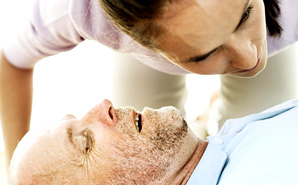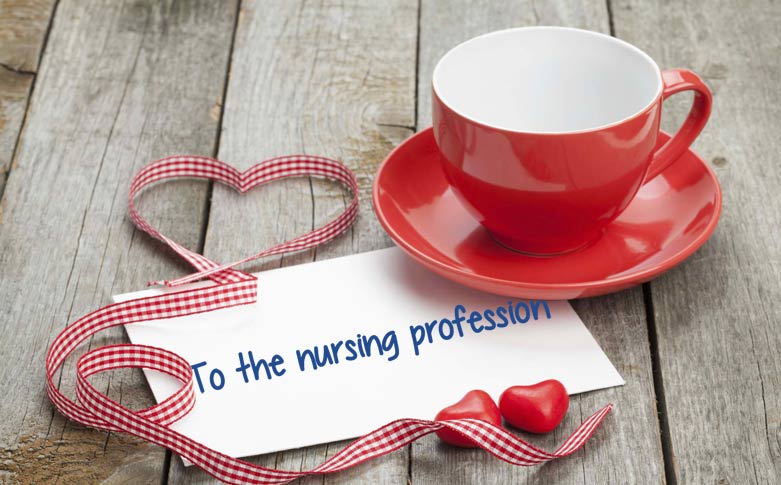
Stockbyte | Thinkstock
Healthcare. A profession where we are all taught how to and expected to respond appropriately in emergency situations, help people in need, and save lives… right? A hefty expectation for any individual, but an honorable one I suppose. When handed the appropriate resources for following out such expectations (hospital setting, nearby code cart, ample hands with comparable “life-saving” experience) although the result is not always favorable, it is easy to look back and say we did everything we could.
So how about when we are thrown into unfavorable situations where those same vital resources are not at our fingertips? When you don’t have an attending running the code or a respiratory therapist there to intubate in seconds. When you don’t have code drugs to push when you lose a pulse and the only faces you see around you are those staring in horror because they’ve never seen a person down in their lives. We are all comfortable with our CPR skills on dummies because we’ve practiced countless times. And many of us may be comfortable with our CPR skills on actual humans because we’ve been in countless codes in the hospital. But how many of us, aside from EMS and transport team folks, are comfortable with the idea of resuscitating an individual in a public setting, in a house, in a park, on a plane, in a restaurant, or on the street?
By nature of our professions, we are expected to be the first respondents to an emergency situation, even if outside the hospital. People shout for nurses and doctors when a person collapses in a crowd. It would be against our nature to drive by a car accident that we witnessed prior to the ambulance and firetruck arrival. We are supposed to be immune from the “rubber-necking” response… the rubber-neckers are looking at us.
The alarm went off at 4:25 and the nurse rolled over with a moan thinking it was a very bad idea to sign up for a race with a 6 a.m. start time. As she is in the bathroom brushing away at her teeth she hears the sound of screeching tires then a house-shaking blast that quickly wakes her up from her early morning daze. In her run up the stairs she sees the frightened look of her roommate by the front door gazing out the window. They know the blast was close because they can see the smoke billowing in the air above the street. The nurse throws on some shoes, opens the door and runs to the sidewalk, gazing in front of the neighbor’s house at the intersection where a light pole stands. In the haze of the smoke she notices what appears to be two mangled cars, one on each side of the concrete pole. She hears sirens in the distance and as the lone cop car approaches she notices that the two pieces are the front end and back end of one car, completely split by impact. As she is scanning the scene for any movement, the neighbors start to come out of their homes on the front steps, and the cop jumps out of his patrol car stating that he’d been chasing the car for three miles and clocked the driver going 100 mph when he sped by. Suddenly the nurse sees a body on the ground directly between the two sections of the car. She asks the cop if he thinks the car debris has the potential to catch on fire because she can already smell the gasoline at the scene. The cop says the engine part of the vehicle is further away but he will stand between her and the car and watch for any sparks. The nurses yells to her roommate to get the rubber dishwashing gloves under the sink because she can already see blood pooling around the body, but more importantly, she can see the figure breathing.
**Contents below are quite graphic, please read at your own discretion**
The nurse approaches the body to find a middle-age appearing man in a white (blood-stained) t-shirt and pants strewn 4 feet away from him due to impact. He has a foot long laceration in his thigh, a mangled right arm and she can tell he has had a traumatic brain injury due to the amount of bleeding and swelling coming from his facial orifices. However, upon leaning down to do her ABC assessment (thank you American Heart Association) she finds his airway intact and his breathing rapid. She can palpate a brachial pulse. She yells to the cop that the man is breathing and has a pulse and tells him to put some fire under EMS’ tail because there is still a chance for him. After a mere couple of seconds she notices his breathing becomes agonal in nature and when she feels for a pulse, she can no longer detect one. So there, in the middle of the street, at 4:30 a.m., in her pajamas, this nurse initiates chest compressions. She remembers learning that if there are no barrier devices available to provide rescue breaths, just doing chest compressions provides better outcomes for the patient than nothing at all. It seems like forever until the ambulance arrives, but in reality it was just a couple of minutes. The nurse steps back when the guys with the AED and intubation equipment arrive at the scene. They assess the body, assess the injuries, and pronounce him dead at the scene.
That nurse in the account I just recalled was me. The most difficult part about the entire experience was seeing the team pronounce the man dead after I had been pounding on his chest. I struggled with the thought that they should at least have the decency to load him up on a stretcher and take him off to the level 1 trauma center just down the street so I could have some feeling of hope. But in all reality, they have experience in knowing when a patient has a chance and when they don’t. And this man’s injuries were too extensive.
It took me about a year until I was able to turn right out of my house without grimacing when I passed that intersection. It took months before I stopped dreaming about that guy in the white t-shirt, and wondering if he left behind any kids of his own. It took weeks before I stopped second-guessing everything I did that early morning and blaming myself for not being able to save him. It took days before I could be in a room by myself without feeling uneasy. It took hours of crying to get past the fact that I just witnessed a horrible and unpredictable death. But it only took seconds to muster the strength to kneel at his side and perform nurse-like duties to this stranger in front of my house. Now, two years after the incident, I can honestly pride myself in the efforts I took to save that man’s life. Although the outcome was highly unfavorable, it gives me confidence to know that I have the strength to respond to an emergency even outside of my comfort zone of the hospital. I hope to never find myself in a similar situation again but there is some resolution in knowing that I have that experience behind me to learn from, and there is a certain strength to gain from that. Is a scenario like this one that is practiced or rehearsed in school? Absolutely not. But I quickly learned that morning that the letters R.N. after my name extend much further than just through the halls of the hospital.
Has anyone found themselves in a situation outside of the comfort of the hospital?

















